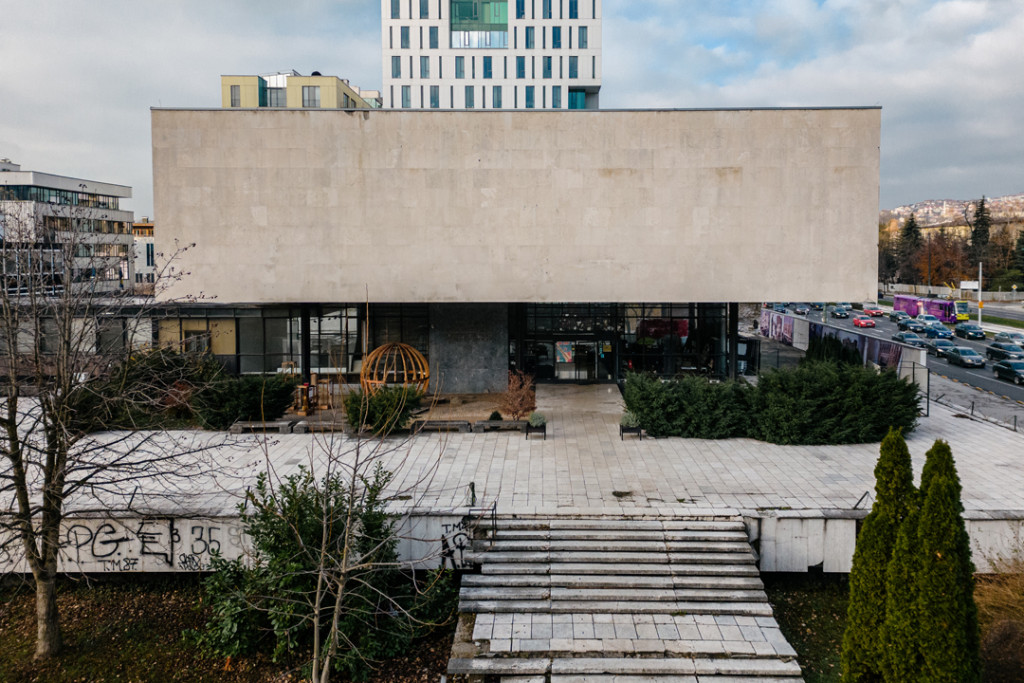
Reporter: Osman Zukic / Photographer: Almir Kljuno
The museum was opened after the liberation of Sarajevo with the idea of preserving the memory of the Second World War and the victory against fascism. The first collections were exhibited in the Sarajevo City Hall and the National Museum, but that was not enough. Because of the great need to emphasize the importance of heritage, a new building for this purpose was built. This architectural building was a symbol of modernity and a vision for the future. A clear message was sent about the society that cherished and celebrated the past, and that also had a vision for the future. Thousands and thousands of visitors came to the building on a daily basis. The programs and exhibitions that they were exposed to formed their identity, the identity of the socialist man. The idea of brotherhood and unity, which was based on a shared anti-fascist heritage and built on the wings of victory against a big enemy, lived in this building for almost half a century.
Historical Museum of Bosnia and Herzegovina
The Museum of the Revolution, today the Historical Museum of Bosnia and Herzegovina, is one of the seven cultural institutions that should be supported by the state. The Historical Museum, like other state museums, libraries and galleries, found itself in a legal vacuum when it lost the ideology in whose name it was built and the state that built it. As nobody wanted to take on the responsibility for these institutions, they were given the status of state institutions.
What does it mean?
"The Historical Museum of Bosnia and Herzegovina does not receive any funds from any public budget. Therefore, the museum does not have regular income from any level of government, for the maintenance of the museum, for employee salaries, for heating, utilities..."
This is what Director of the museum and historian Elma Hasimbegovic says in one of the museum depots. A large, cold and empty space. A few days earlier, in this depot the exhibit Racial diagnosis: Gypsies thematized the Roma victims in the Second World War. The exhibition was part of the Museum Month program, which is organized every November in the Historical Museum.
In the adjacent depot there is a permanent exhibition about the siege of Sarajevo.
If the Historical Museum is not in the public funding system, then how does it even operate?
"We just became defiant at one point."
The idea was to organize the museum team inside to create our strategy and programs, to apply with projects and to offer the museum resources to other productions. This approach implied to get everyone moving, which was the most difficult thing to do in the circumstances of apathy and disappointment.
This process started in 2012.
"We started with the idea of restoring the dignity that belongs to the museum and putting the museum back on the map of cultural institutions, as well as letting citizens know that it exists."
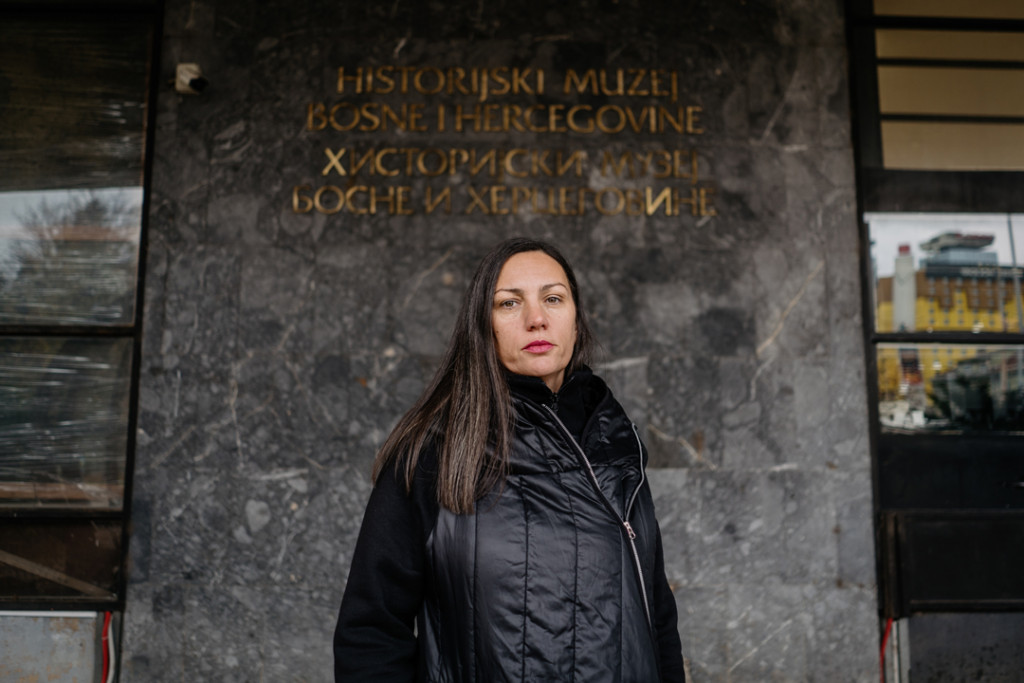
Negligence and political reasons
What is kept in the museum? Collections numbering hundreds of thousands of items that bear witness to important periods in the history of Bosnia and Herzegovina. There are valuable works of art on the ground floor. On the upper floors there are valuable documents from the recent past of Bosnia and Herzegovina.
"This priceless treasure belongs to the cultural and historical heritage of Bosnia and Herzegovina. Our idea is also to show the conditions in which we keep everything."
Some political views praise and appropriate this heritage, while others renounce it. The truth is that neither side wants to take care of it. Both of these political views and a general disregard for culture are the reasons why the museum is in this situation.
"The fact that we are called institutions of state importance, the name that someone gave us only because of our unresolved legal status, is actually more of a burden than an advantage. It is not a matter of economy and economic power, nor a lack of funds, it is purely a political problem. And we've been living like this for thirty years."
On the other hand, Director Hasimbegovic says that this disregard for culture comes as the result of a lack of understanding of culture and a lack of awareness of the importance of culture.
Another burden that this institution carries is the legacy of socialism, which is renounced by almost all political views in Bosnia and Herzegovina.
"We allowed cultural institutions to be neglected, which was the objective of the politicians in power. It is the deliberate destruction of institutions, shared heritage, shared culture and general history in this region. The Historical Museum is an institution that preserves the cultural and historical heritage of all ethnic groups. These national institutions come across as supra-ethnic in this country".
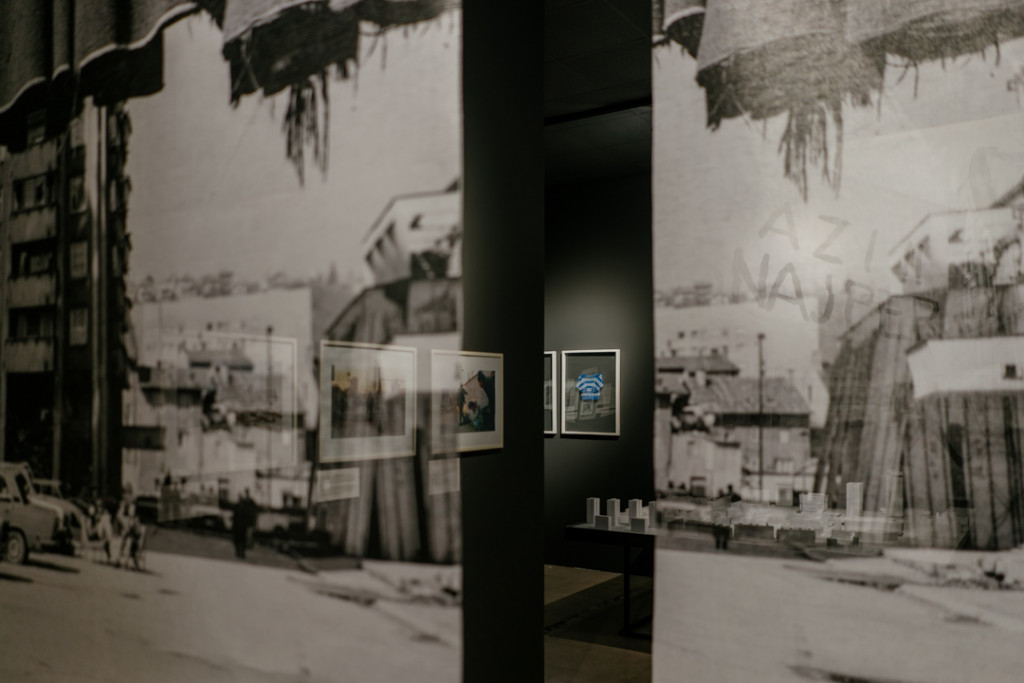
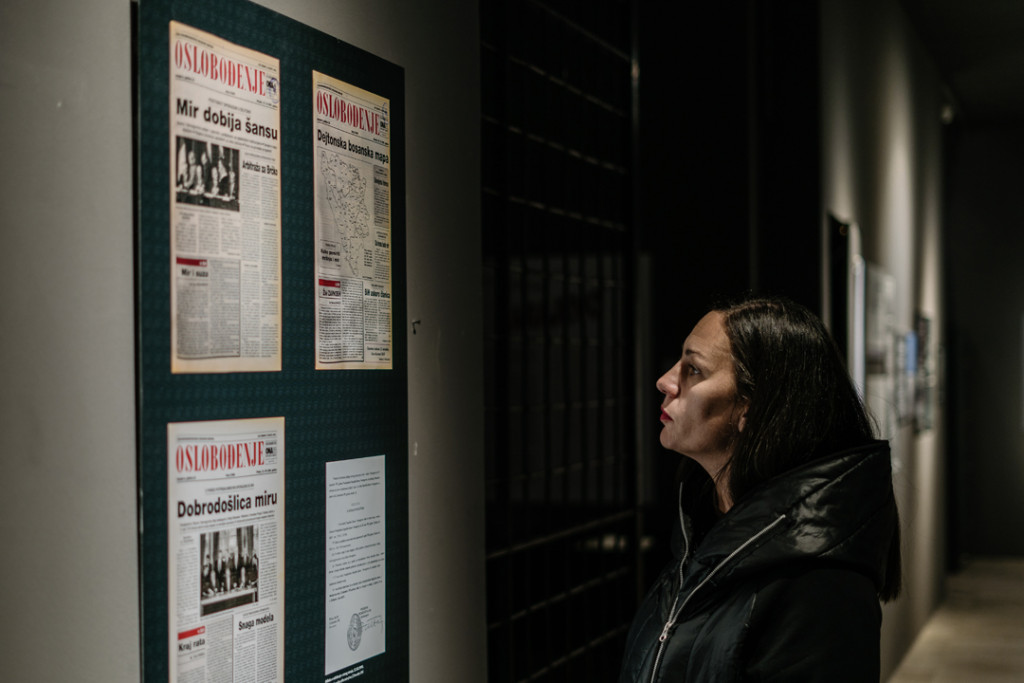
Memory of the shared past
The museum preserves the memory shared by all peoples in Bosnia and Herzegovina. It bears witness to this country from before the 1990s. It reminds us of the country where three peoples lived, sharing the same past and building a shared future. It brings that idea to life. This is why it is not important to anyone, because only a few in Bosnia and Herzegovina envisage such a country.
"We were driven by pure defiance, on the one hand, and the desire to save the museum collections and our heritage, on the other hand. We will not allow a part of the history of this country to be erased. Over time, we embraced that past. We realized that we had to open the museum to the public. We advocate the policy of an open museum."
This means that the museum is open for different topics and for different event formats, for different target groups. It is offered to the academic and artistic community as a space where they can feel comfortable and where they can express themselves.
In this museum, every year is a new beginning.
The director says that every year they look at how much money they have in their account, what they can cover with it and how much they need to operate smoothly until the end of the year. They start from scratch every year.
"The idea is to be involved in different projects as much as possible. Apart from bringing us some finances, this approach brings activities to the museum. We have put the museum back on the cultural scene, giving it an important role in social activities in Bosnia and Herzegovina. Here, we discuss this society as it is today and what has brought it to this point."
Additional funds come from self-generated revenue: ticket sales, souvenirs, space rentals, and the like.
"When we sum it up at the end of the year, there is always a multitude of cultural events that we have produced in-house or hosted in our premises. We are proud of it."

Cultural activism
This cultural activism is an expression of responsibility of individuals and their need to change society, to initiate positive changes, to criticize bad policies and practices and to promote good ones.
"We are satisfied that the museum is alive, that it is a place of events, that it is recognized as an important institution."
On the other hand, everything that the museum team does to keep the museum open and active is something that should not be their primary job: research, new collections, promotion of the museum and the museum collections in the world.
"Every individual carries a responsibility. Once we realized this, we started fighting to preserve this institution. Individual responsibility is what motivates cultural workers in this country, and it is precisely because of this that institutions survive."
There is no other motive, apart from wanting this approach to work and to change things for the better.
"Who could make us sit in a cold museum and work in cold rooms with the public? For example, the curatorial team worked with young people all day long every day in November. Visitors come and pass through the museum, but our people are here all day. Individual responsibility is obviously the key thing, especially when it comes to culture and especially when we see that cultural institutions are collapsing systematically."
On the other hand, it is not right for cultural institutions to depend on one individual and on some ad hoc events, says Director Hasimbegovic.
The first thing in the mission of cultural workers is to change cultural policies, to change society for the better and to heal society. Cultural workers recognize anomalies in society and draw the public's attention to them. Cultural workers connect artists and create a society of advanced ideas, a society of progress and openness.
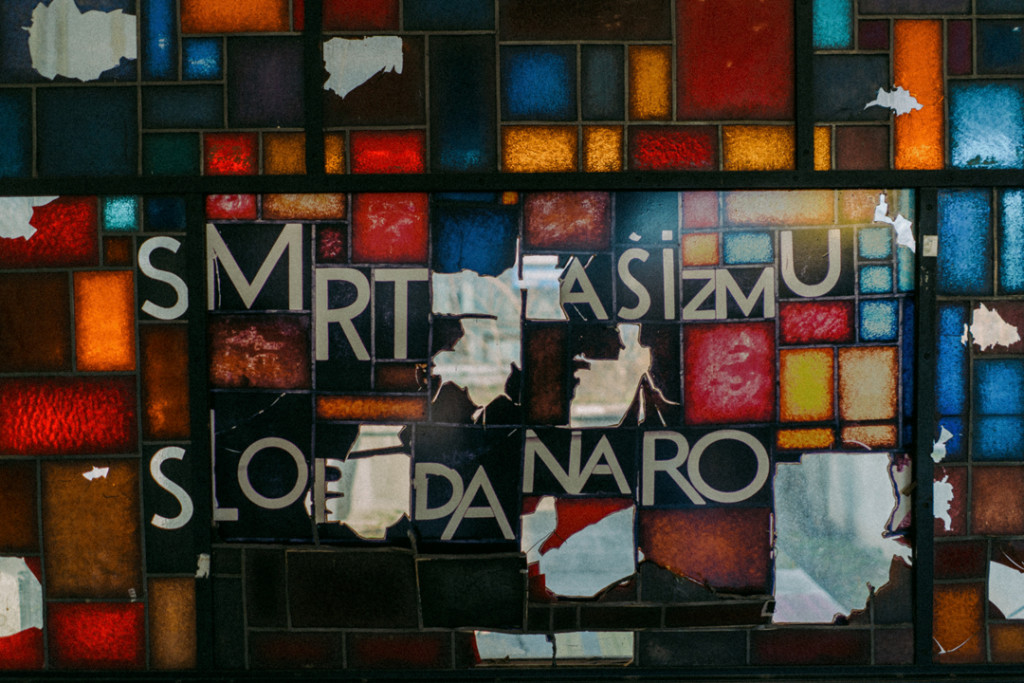
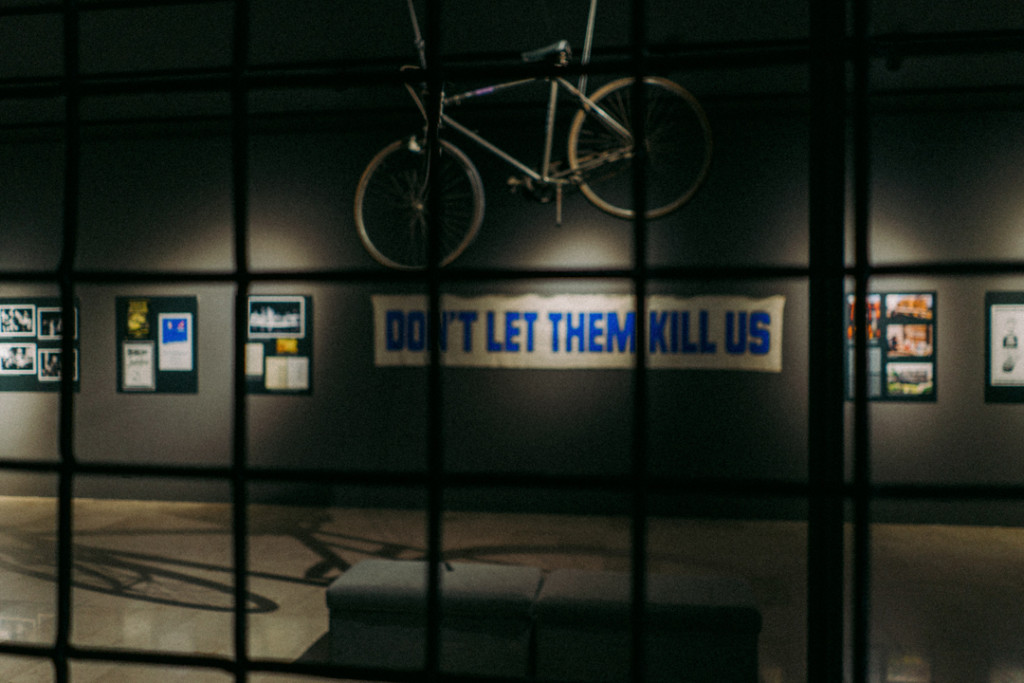
Lack of education and information
"These are some motives that guide us. Thinking about how to approach an individual, a group, a community and how to contribute to such a toxic society in a positive way. We talk with our audience in person, we discuss...We are in regular contact and dialogue with visitors and they are actually citizens of this country. When we see that we have positively influenced one individual and have encouraged them to think or ask questions, I think it is success."
But one museum cannot change the world.
"We cannot take this obligation and responsibility upon ourselves because it is too big and our society is too toxic. The museum can do what is realistic. When we go out on the street, we see many bigger problems."
According to the last international study of student achievements, in which our country participated, every second student is functionally illiterate in Bosnia and Herzegovina. According to our interviewee, poor education and a lack of information are the key reasons for the state of society, and this is reflected in the attitude towards culture and cultural institutions.
"We have realized how much we can do and that we must work with young people. We encourage them to learn and think, we ask them questions, we ask them to ask us questions. Through the language of art, we show them difficult topics and problems of this society. I would like every institution dealing with the education of young people to achieve this."
Despite all the problems and obstacles, the Historical Museum of Bosnia and Herzegovina has established itself as an important cultural institution both domestically and internationally. Productions from around the world, such as the musical performance 77 Million Paintings by British musician Brian Eno, are organized in this institution. During one of our visits to the museum, we witnessed the planning of an exhibition about the 1990s, which was created in Belgrade and which concerns all the countries of the former Yugoslavia.
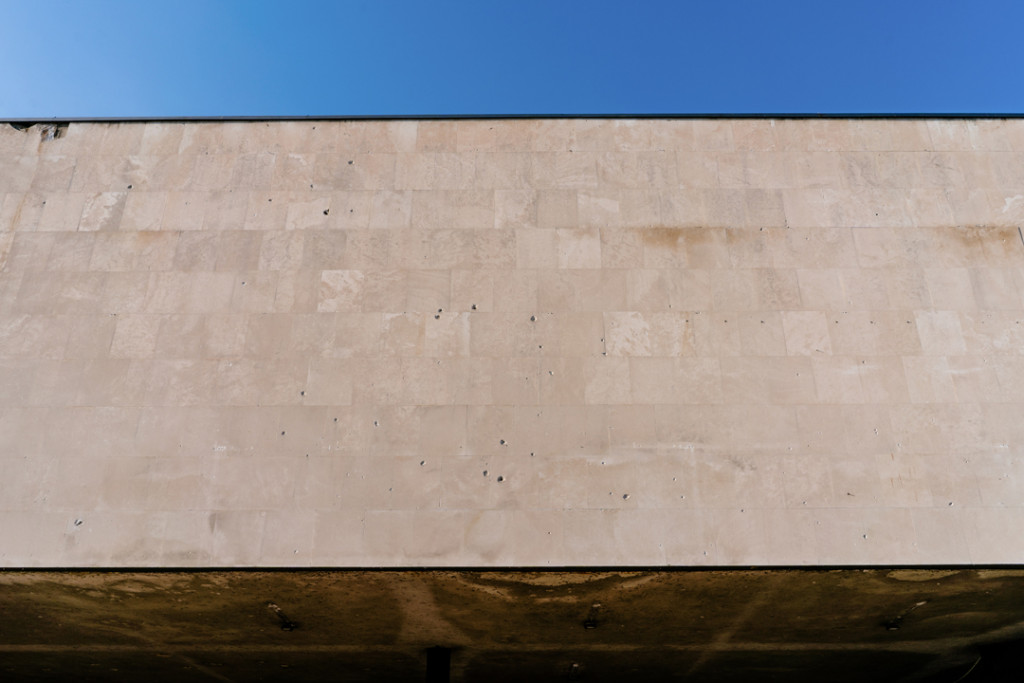
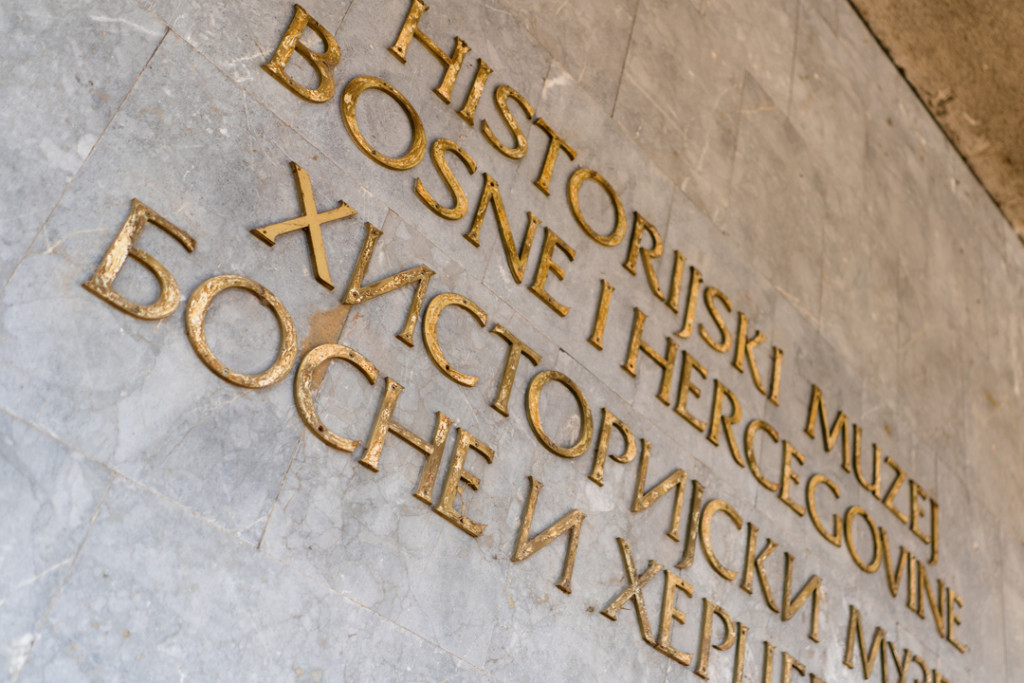
From an abandoned to a respectable institution
"I think that we have turned an abandoned institution and a ruined building into a respectable institution that people like to visit and through which thousands and thousands of visitors have passed. The building is still ruined in the physical sense, but it has been quite revitalized and it has a very dynamic cultural life. Our art exhibitions are not only there to fulfill aesthetic and cultural needs, but they are there to question society. Sarajevo has gained one respectable cultural institution compared to the period of twenty years ago. This means that we have succeeded."
Today, this museum serves art and culture. The freedom that the museum team enjoys is the freedom they won. Since nobody finances them, nobody can demand anything from them.
"We say that this is a revolutionary museum where we fought for freedom. We fought alone for every bit of our freedom. That is the biggest plus somehow. We have turned the situation of nobody's museum into a place that is open to society."
This institution is a public good and the property of all citizens of this country. As such, it should not have been neglected.
"We were compelled to step out of the framework of a classic cultural institution that depends on financial support from the state, injections from the state. We are not a sluggish, slow institution that changes slowly and where nothing new happens. We changed the museum definition a long time ago and a new institution has been created. On the other hand, it is not good that we alone are pushing for the public good. Maybe it can make me happy at the moment, fulfill me, fulfill the people who work here, but I believe it's not a good thing for the future of the institution."
The Historical Museum as a metaphor for Bosnia and Herzegovina
After the war of the 1990s in Bosnia and Herzegovina, politicians started creating a new cultural identity. This process involved establishing new foundations upon which the cultural identity of each ethnic group would be built exclusively. This particular approach led to the suppression and renunciation of our shared past. New ethnic canons have been created in all domains of art and culture.
In this context, individuals, activists, make a difference. They interpret this society with all its complexities and draw attention to the causes of divisions, social depression, and regression of values. Their approach is universal. It implies that the past is a lesson from which we can learn about what we did well and what we did poorly. Their opinion is that this is the only way we can move forward.
Elma Hasimbegovic and her team will not give up this approach. They don't hide behind political views, they criticize them. The freedom they have won is the freedom this society should strive for.
Politicians in Bosnia and Herzegovina will not give up their approach either. The privileges they have won are the privileges that the citizens of this country do not enjoy. They hide behind temporary values that will last as long as they serve them.
The Historical Museum is a metaphor for Bosnia and Herzegovina. A place that has been left behind by everyone, but that breathes only thanks to those who have not given up on the idea of this country. Because, what kind of future will we have when we renounce the past?
(A story from the author's series "Activism in BiH: Lessons Learned and Missed", created with the support of the European Endowment for Democracy.)
